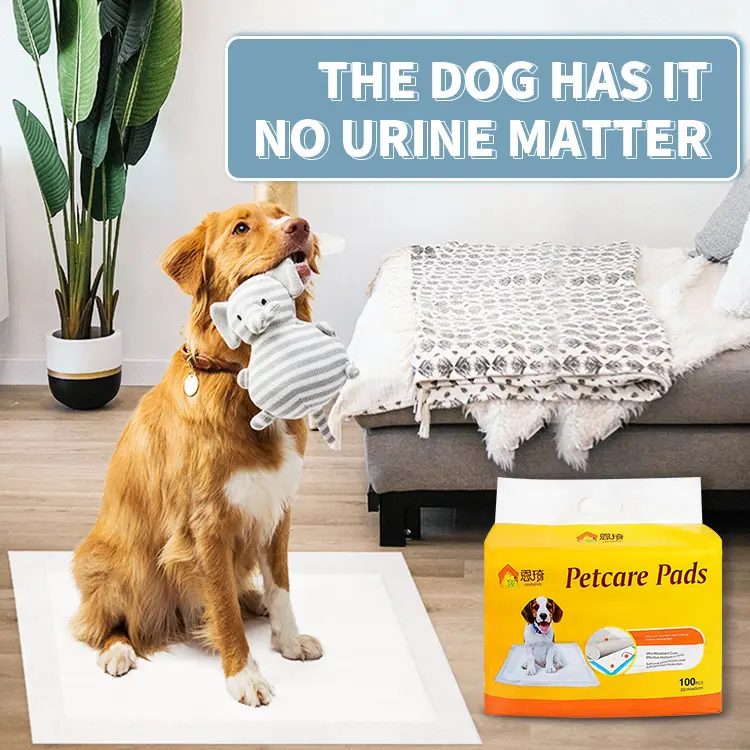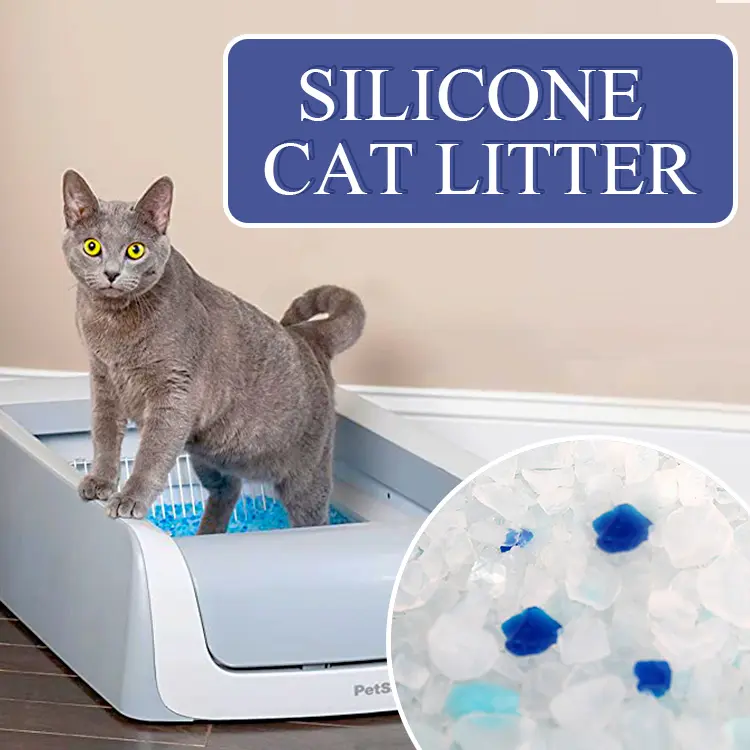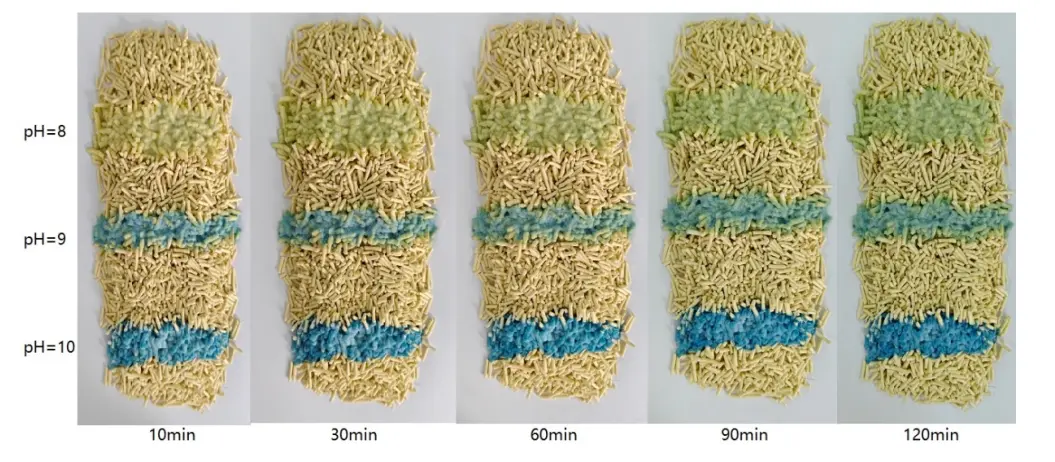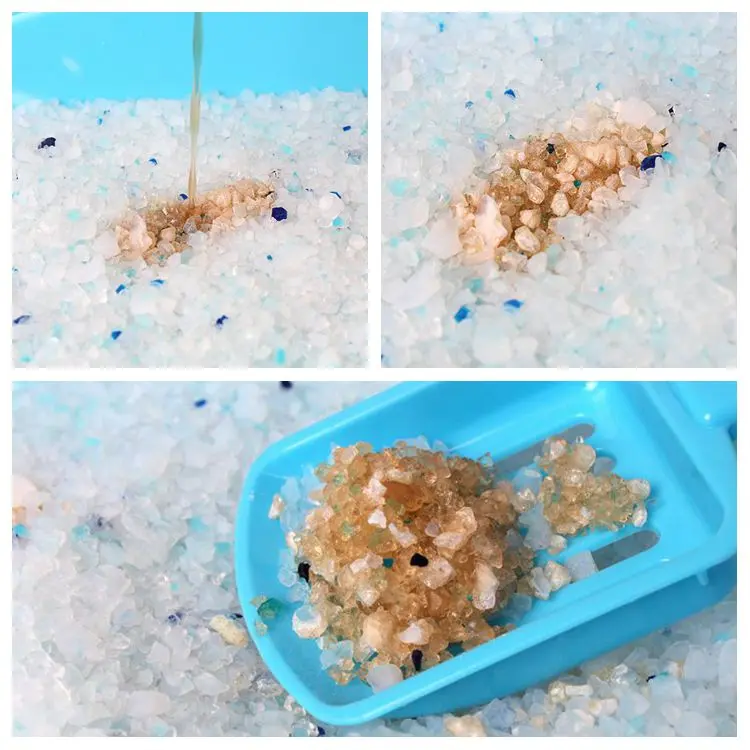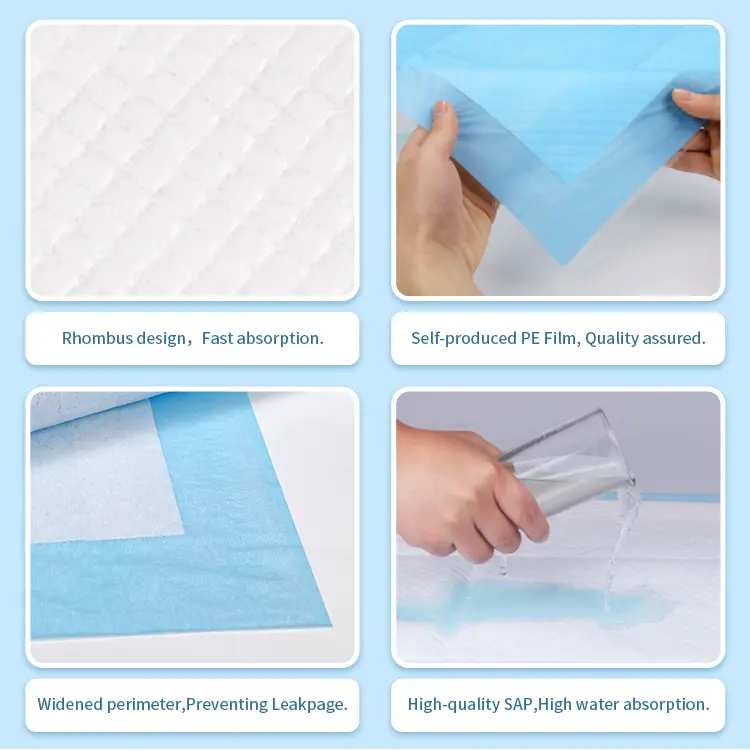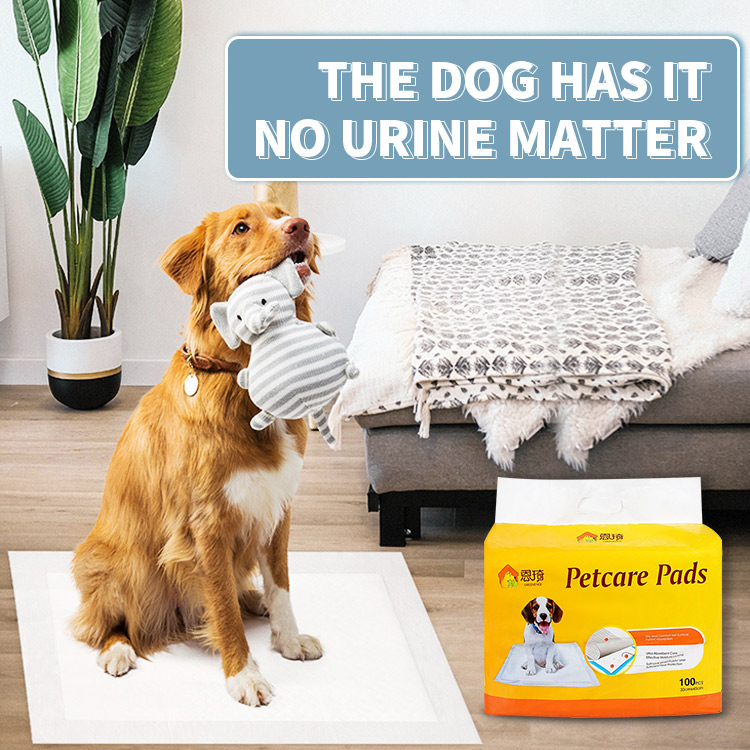How Often to Change Wood Pellet Cat Litter: A Comprehensive Guide
Wood pellet cat litter has gained popularity among pet owners for its eco-friendly nature, absorbency, and natural odor control. However, one common question that arises is: How often should you change wood pellet cat litter? The answer isn't as straightforward as it might seem, as it depends on several factors including the number of cats, the type of litter box, and your cat's habits. This article will explore these factors in detail and provide practical tips on maintaining a clean and healthy environment for your feline friend.
Understanding Wood Pellet Cat Litter
Wood pellet cat litter is made from compressed sawdust or other wood fibers, often from pine. When your cat urinates, the pellets absorb the moisture and break down into sawdust, which can be easily removed. The pellets are also effective in controlling odors naturally, making them a preferred choice for many environmentally conscious pet owners.
Unlike traditional clumping clay litters, wood pellets don’t clump. Instead, they disintegrate into sawdust, which can be sifted out of the litter box, leaving the remaining pellets intact. This characteristic plays a significant role in determining how often you need to change the litter.
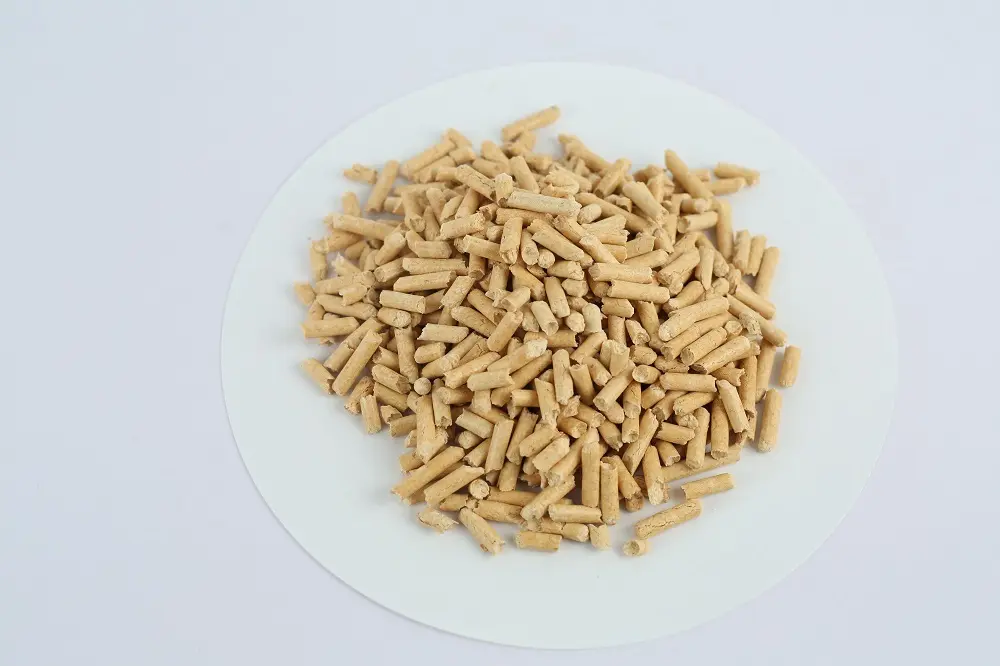
Factors Affecting the Frequency of Changing Wood Pellet Cat Litter
Number of Cats:
The more cats you have, the faster the litter will become saturated with moisture and odors. For a single cat, you might need to change the litter less frequently compared to a multi-cat household.
Litter Box Size and Type:
The size and type of your litter box can impact how often you need to change the litter. A larger box with more pellets can go longer between changes, while smaller boxes may require more frequent maintenance. Additionally, some litter boxes are designed specifically for wood pellet litter, featuring sifting mechanisms that separate the sawdust from the intact pellets.
Cat's Habits:
Some cats have a habit of urinating in the same spot every time, which can cause the pellets in that area to break down faster. Observing your cat’s behavior can help you determine which areas of the litter need more frequent attention.
Ventilation:
A well-ventilated area will help dry out the litter faster, reducing the need for frequent changes. However, in a poorly ventilated space, the litter may stay damp longer, necessitating more frequent changes.
General Guidelines for Changing Wood Pellet Cat Litter
While the frequency of changing wood pellet cat litter can vary, here are some general guidelines to help you maintain a clean and odor-free environment:
Daily Maintenance:
Sift out the sawdust: As your cat uses the litter box, the pellets will break down into sawdust. Use a scoop or a litter box with a sifting mechanism to remove the sawdust daily. This will help keep the litter box clean and extend the life of the remaining pellets.
Stir the pellets: Stirring the pellets regularly can help distribute moisture evenly and prevent certain areas from becoming oversaturated.
Weekly Cleaning:
Depending on the number of cats and their habits, you may need to completely change the litter every 1-2 weeks. For a single cat, this might be extended to every two weeks, while multi-cat households may need to do this weekly.
Full Replacement:
Even with regular sifting and stirring, the pellets will eventually become fully saturated and lose their effectiveness. When you notice the pellets are no longer absorbing moisture or controlling odors, it’s time for a full replacement.
Litter Box Cleaning:
Each time you change the litter completely, it’s a good idea to clean the litter box thoroughly with mild soap and water. Avoid harsh chemicals that could leave residues harmful to your cat.
Landing Data: Real-Life Examples
To provide more specific guidance, let's look at some real-life data:
Single Cat Household:
A pet owner with one cat reported that they needed to change the litter every 10-14 days, with daily sifting of sawdust. They used approximately 7-10 pounds of wood pellet litter per change.
Two Cats Household:
Another pet owner with two cats found that they needed to change the litter every 7-10 days, using about 15 pounds of wood pellets per change. Daily maintenance included sifting and stirring the pellets to prevent oversaturation.
Three or More Cats:
In a household with three or more cats, the litter required changing every 5-7 days, with more frequent sifting and stirring. They used around 20-25 pounds of pellets per change.
These examples illustrate that while general guidelines are helpful, individual circumstances can vary widely.
Wood Pellet Cat Litter Compare to Traditional Clay Litter
Wood pellet cat litter and traditional clay litter are two of the most popular choices for cat owners, each offering distinct advantages and disadvantages. Understanding the differences between them can help you choose the best option for your feline friend.
1. Environmental Impact:
Wood Pellet Litter: Wood pellet litter is made from renewable resources, typically compressed sawdust or other wood by-products. This makes it a biodegradable and environmentally friendly option. After use, the litter can be composted, reducing landfill waste. Additionally, the production of wood pellet litter has a smaller carbon footprint compared to clay litter, as it utilizes wood waste that might otherwise be discarded.
Traditional Clay Litter: In contrast, clay litter is made from bentonite clay, which is mined through strip mining, a process that can be environmentally destructive. The mining process requires large amounts of energy and can lead to habitat destruction and soil erosion. Once used, clay litter is not biodegradable and contributes significantly to landfill waste. According to the U.S. Environmental Protection Agency, over 2 million tons of clay cat litter end up in landfills each year.
2. Absorbency and Odor Control:
Wood Pellet Litter: Wood pellets are highly absorbent, with each pellet capable of absorbing several times its weight in moisture. As the pellets absorb urine, they break down into sawdust, which can be easily removed. This high absorbency helps to control odors naturally, as the wood's natural scent can mask the smell of ammonia. Case studies have shown that wood pellet litter can reduce ammonia levels in a litter box by up to 30% compared to clay litter.
Traditional Clay Litter: Clay litter, particularly clumping varieties, is also known for its absorbency. The litter forms hard clumps when it comes into contact with moisture, making it easy to scoop out soiled areas. However, clay litter can sometimes struggle with odor control, especially if not changed frequently. Some clay litters include added fragrances or chemicals to help mask odors, but these can be irritating to sensitive cats or owners.
3. Cost and Usage:
Wood Pellet Litter: Although wood pellet litter can initially be more expensive than clay litter, its high absorbency means that less litter is needed overall. A single 20-pound bag of wood pellet litter can last a single cat for several weeks, depending on usage. Additionally, since it doesn't need to be changed as frequently, the overall cost can be comparable or even lower than clay litter over time.
Traditional Clay Litter: Clay litter is generally less expensive upfront, but because it needs to be changed more frequently, the cost can add up. For multi-cat households, the need for frequent litter replacement can make clay litter a more expensive option in the long run.
4. Health Considerations:
Wood Pellet Litter: Wood pellet litter produces little to no dust, making it an excellent option for cats with respiratory issues or for owners who are sensitive to dust. The lack of chemicals and fragrances also makes it a safer choice for sensitive cats.
Traditional Clay Litter: One of the major concerns with clay litter is the dust it generates, which can be a respiratory irritant for both cats and humans. Some clumping clay litters also contain sodium bentonite, a substance that can be harmful if ingested in large quantities.
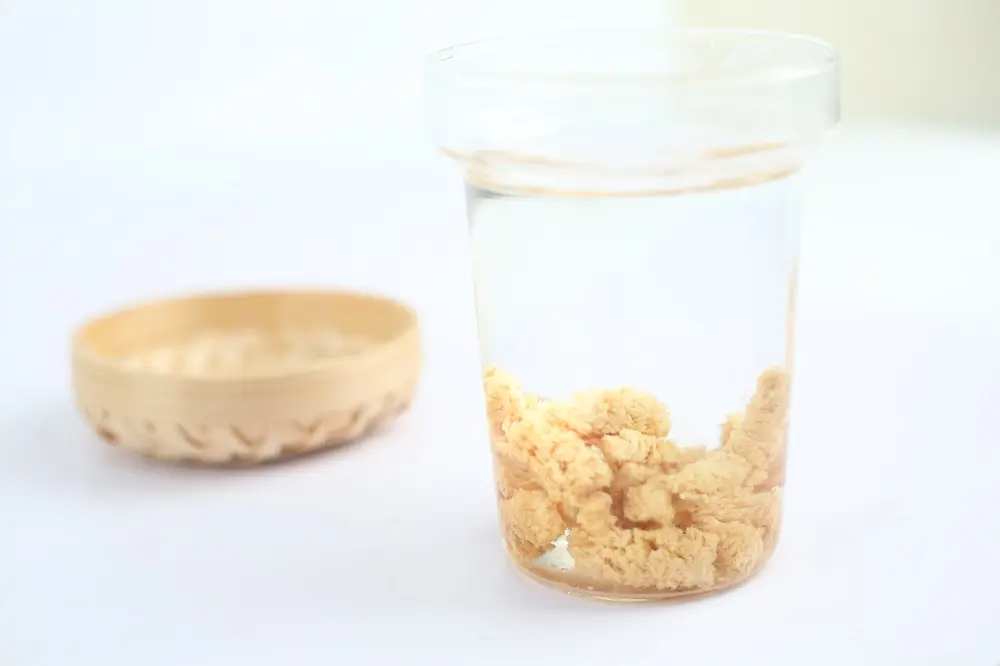
Is Wood Pellet Cat Litter Safe for My Cat?
Yes, wood pellet cat litter is generally safe for most cats, and it offers several health benefits that make it an attractive option for pet owners. However, as with any product, there are some considerations to keep in mind to ensure it is the right choice for your feline friend.
1. Natural Ingredients:
Wood Pellet Litter: Wood pellet litter is made from natural materials, primarily sawdust or wood fibers, which are compressed into pellets. These materials are free from harmful chemicals, artificial fragrances, or dyes, making them a safer option for cats, particularly those with allergies or sensitivities. The absence of chemical additives also reduces the risk of skin irritation, a concern that some cats experience with certain types of litter.
2. Low Dust Levels:
Respiratory Health: One of the significant benefits of wood pellet litter is its low dust levels. Traditional clay litters, especially non-clumping varieties, can produce a significant amount of dust when poured, scooped, or disturbed by a cat's digging. This dust can irritate a cat’s respiratory system, leading to coughing, sneezing, or more severe conditions like asthma. Wood pellet litter, on the other hand, produces little to no dust, making it a safer choice for cats with respiratory issues.
Case Study: In a study conducted by Green Pet Care Co., Ltd., it was found that households that switched to wood pellet litter reported a 25% reduction in respiratory symptoms in cats with known respiratory issues. Owners also noted a significant decrease in the amount of dust in the air, leading to a cleaner and healthier home environment.
3. Safe for Ingestion:
Natural and Non-Toxic: Cats are known to groom themselves frequently, and there is always a possibility that they might ingest small amounts of litter particles stuck to their paws or fur. Wood pellet litter, being made from natural wood, is non-toxic and generally safe if ingested in small quantities. Unlike clumping clay litter, which can cause intestinal blockages if ingested, wood pellet litter is less likely to pose such risks.
Pet Owner Feedback: A survey conducted among pet owners using Green Pet Care’s Duofu wood pellet litter showed that 92% of respondents felt confident in the safety of the product, particularly in households with kittens or cats that tend to ingest small amounts of litter.
4. Biodegradable and Eco-Friendly:
Environmental Safety: Beyond its safety for cats, wood pellet litter is also safer for the environment. It is biodegradable and can be composted after use, reducing waste and minimizing its environmental impact. This contrasts with clay litter, which is non-biodegradable and contributes to landfill waste.
Sustainable Practices: Green Pet Care Co., Ltd. ensures that their wood pellet litter is sourced from sustainably managed forests, adhering to strict environmental standards. This commitment not only supports a healthier planet but also assures pet owners that they are choosing a product that aligns with their eco-conscious values.
5. Considerations for Transitioning:
Gradual Introduction: While wood pellet litter is safe for most cats, it’s important to transition gradually if your cat is used to another type of litter. Cats can be particular about their litter, and a sudden change might lead to litter box avoidance. Start by mixing a small amount of wood pellet litter with your cat’s current litter and gradually increase the ratio over time. This approach allows your cat to adjust to the new texture and scent without stress.
Monitoring: As with any litter change, it’s essential to monitor your cat’s behavior and health during the transition. If you notice any signs of discomfort, such as excessive grooming, scratching, or changes in bathroom habits, consult your veterinarian.
How Often Should You Change Your Wood Pellet Cat Litter?
The frequency with which you should change wood pellet cat litter depends on several factors, including the number of cats you have, their litter habits, and your personal preferences. However, a general guideline can help you maintain a clean and odor-free litter box while ensuring your cat’s comfort.
1. Understanding Wood Pellet Litter:
Absorption Process: Wood pellet litter is highly absorbent, with each pellet capable of soaking up several times its weight in moisture. When your cat urinates, the pellets absorb the liquid and break down into sawdust. This sawdust can then be sifted or scooped out, leaving the remaining dry pellets intact. This breakdown process is different from clumping clay litter, where the entire clump needs to be removed.
Odor Control: The natural scent of wood, often pine or cedar, helps to control odors by masking the smell of ammonia. As the pellets absorb urine, they effectively lock in odors, making it easier to maintain a fresh-smelling litter box. However, over time, the sawdust and remaining pellets can become saturated, leading to reduced odor control.
2. Changing Frequency:
Daily Maintenance: To keep the litter box clean, it’s essential to remove the soiled sawdust daily. You can use a litter scoop or sifter designed for wood pellets to separate the sawdust from the intact pellets. By removing the sawdust regularly, you extend the life of the remaining pellets and prevent the build-up of odors. This daily maintenance can help you go longer between complete litter changes.
Complete Change: Depending on usage, a full litter change is typically needed every one to two weeks for a single cat. If you have multiple cats, you may need to change the litter more frequently, perhaps once a week. A full change involves removing all the pellets and sawdust from the litter box, thoroughly cleaning the box, and replacing it with fresh pellets. This routine ensures that your cat always has a clean and comfortable environment.
3. Factors Influencing Frequency:
Number of Cats: The more cats you have, the faster the litter will become saturated. Multi-cat households should monitor the litter box closely and may need to perform complete changes more frequently.
Litter Box Size: The size of the litter box also plays a role. A larger box with more pellets can last longer before needing a full change, as it can hold more moisture and sawdust.
Cat’s Litter Habits: Some cats urinate more frequently or in larger quantities than others. If your cat tends to use the litter box often, you may notice that the pellets break down more quickly, requiring more frequent changes.
4. Case Study:
Single Cat Household: A cat owner with one adult cat reported that by sifting the sawdust daily and topping off the litter box with fresh pellets as needed, they could extend the time between full changes to two weeks. This routine kept the litter box clean and odor-free, and their cat showed no signs of avoiding the box.
Multi-Cat Household: In a household with three cats, the owners found that a complete litter change was necessary every five to seven days to maintain cleanliness and odor control. By cleaning out the sawdust daily and ensuring the box was never too full, they managed to keep the litter box fresh and comfortable for all their cats.
5. Signs It’s Time to Change the Litter:
Odor: If you notice a persistent ammonia smell, it’s likely time to change the litter, even if it hasn’t been a full week.
Saturated Pellets: If most of the pellets have broken down into sawdust, the litter is no longer effectively absorbing moisture and should be replaced.
Cat’s Behavior: Pay attention to your cat’s behavior. If they start avoiding the litter box or seem reluctant to use it, it might be a sign that the litter is too dirty and needs to be changed.
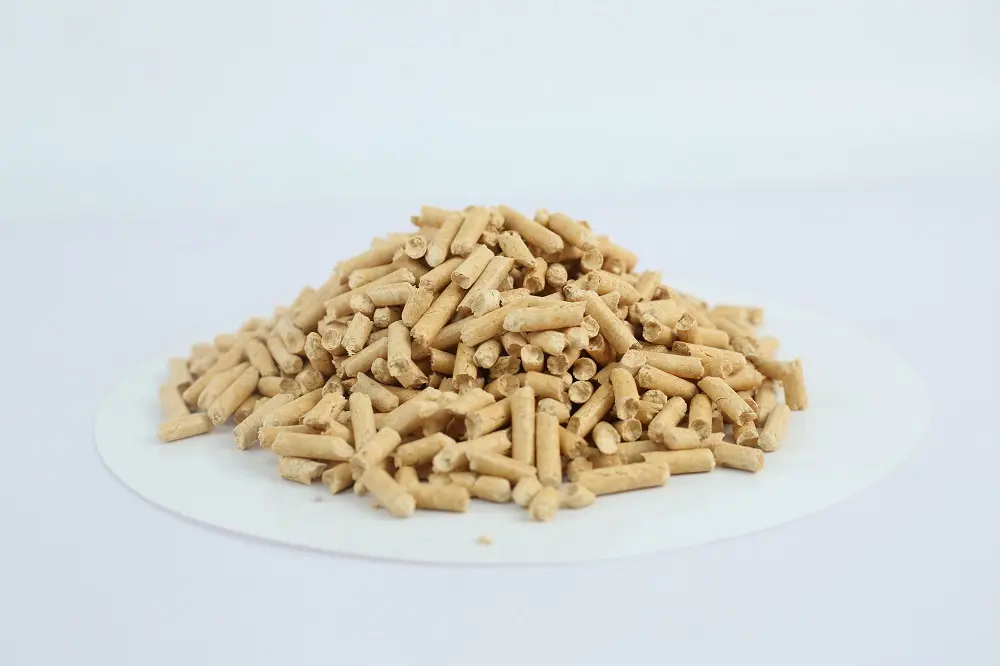
Can I Flush Wood Pellet Cat Litter Down the Toilet?
Flushing wood pellet cat litter down the toilet is not recommended and can lead to serious plumbing and environmental issues. While wood pellets are biodegradable, they are not designed to be flushed, and doing so can cause clogs, damage to plumbing systems, and potential harm to water treatment facilities and ecosystems.
1. Plumbing Concerns:
Clogging Risk: Wood pellet cat litter is made from compressed sawdust that expands when it comes into contact with moisture. When flushed, the pellets can swell and create blockages in your plumbing system. Even if the pellets seem small enough to flush, they can accumulate in pipes and create clogs over time. Once the pellets break down into sawdust, the fine particles can still cause issues by sticking to the inside of pipes and forming clogs.
Case Study: A homeowner in a suburban area experienced a major plumbing issue after flushing wood pellet litter over several months. The sawdust accumulated in the pipes, leading to a costly blockage that required professional plumbing services to resolve. The repair included not only clearing the blockage but also replacing sections of the damaged plumbing, costing several thousand dollars.
2. Impact on Wastewater Systems:
Water Treatment Challenges: Wastewater treatment facilities are not designed to handle cat litter, including wood pellets. The organic material in the litter can disrupt the treatment process, leading to inefficiencies and potential environmental harm. Treatment facilities may struggle to remove all the particulate matter, resulting in the litter entering natural water systems, where it can contribute to pollution.
Environmental Concerns: Even if the litter is biodegradable, introducing wood fibers and sawdust into water systems can affect aquatic life and water quality. The organic material can contribute to the growth of harmful bacteria or algae blooms, which can deplete oxygen levels in water and harm fish and other aquatic organisms.
3. Alternatives to Flushing:
Composting: One of the best ways to dispose of wood pellet cat litter is through composting. Since wood pellets are biodegradable and made from natural materials, they can be safely composted in a dedicated composting system. However, it’s important to note that cat waste should not be used in compost that will be applied to food gardens, as it can contain pathogens harmful to humans. Instead, use the composted material for ornamental plants or dispose of it according to local guidelines.
Disposal in Trash: The most common and recommended method for disposing of wood pellet cat litter is to bag it and throw it in the trash. Use biodegradable bags if possible to minimize environmental impact. This method ensures that the litter is contained and does not pose a risk to plumbing systems or the environment.
4. Local Regulations and Guidelines:
Checking Local Guidelines: Some regions have specific regulations regarding the disposal of cat litter, especially concerning flushing. It’s essential to check local guidelines to ensure you’re complying with any rules. In some areas, improper disposal of cat litter, including flushing, can result in fines or other penalties.
Case Study: In a city with strict environmental regulations, a pet owner was fined for repeatedly flushing cat litter, leading to a blockage in the municipal sewage system. The city had clear guidelines against flushing any type of cat litter, emphasizing the importance of proper disposal to protect local water resources.
5. Safer Disposal Practices:
Designated Trash Disposal: Always dispose of wood pellet cat litter in the trash, using a sturdy, leak-proof bag. Double-bagging can help contain odors and prevent any litter from escaping.
Composting for Non-Food Plants: If you choose to compost the litter, make sure it’s done in a designated composting system that does not mix with food-related compost. This can be a sustainable way to dispose of the litter while benefiting your garden.
Is Wood Pellet Cat Litter Suitable for All Cats?
Wood pellet cat litter is suitable for most cats, but individual preferences and needs can vary. While many cats adapt well to wood pellet litter, some may require a more gradual transition or may have specific preferences that influence their comfort and usage.
1. Texture and Comfort:
Pellet Size and Shape: Wood pellet litter has a distinct texture compared to traditional clay or clumping litters. The pellets are larger and have a firmer, more granular feel underfoot. Some cats, particularly those accustomed to softer, finer litters, may find the texture of wood pellets unusual or uncomfortable at first. However, many cats adapt to this texture over time, especially if introduced gradually.
Case Study: A cat owner transitioned their two adult cats from clumping clay litter to wood pellet litter. One cat adapted quickly, showing no signs of discomfort, while the other initially hesitated to use the new litter. The owner mixed the wood pellets with the old litter over several weeks, allowing the more sensitive cat to adjust. Eventually, both cats became comfortable with the new litter, and the transition was successful.
2. Health Considerations:
Respiratory Health: Wood pellet litter is virtually dust-free, making it an excellent choice for cats with respiratory issues or allergies. Traditional clay litters can produce dust that irritates sensitive airways, leading to sneezing, coughing, or exacerbating existing conditions like asthma. The low-dust nature of wood pellet litter reduces this risk, providing a cleaner environment for both cats and their owners.
Environmental Allergies: Cats with sensitive skin or environmental allergies may benefit from wood pellet litter. The natural composition of the pellets, often made from pine, cedar, or other softwoods, is less likely to cause allergic reactions compared to chemically treated or scented litters. However, some cats may be sensitive to the natural oils in certain woods, so monitoring your cat’s reaction to the litter is essential.
3. Behavioral Considerations:
Litter Box Habits: Some cats have strong preferences for specific litter types and may resist change. If your cat has been using a particular type of litter for a long time, they may require a slower transition to wood pellets. Gradual introduction, such as mixing the new litter with the old or providing multiple litter boxes with different types of litter, can help ease the transition.
Case Study: A household with four cats decided to switch to wood pellet litter due to its eco-friendly nature and cost-effectiveness. While three of the cats adjusted within a week, the fourth cat showed signs of litter box avoidance. By placing a second litter box with the original litter type alongside the wood pellets, the owners allowed the hesitant cat to adjust at their own pace. Within a month, all four cats were using the wood pellet litter consistently.
4. Age and Mobility:
Kittens: Young kittens may have difficulty using wood pellet litter due to the size and firmness of the pellets. Their small paws may find the pellets uncomfortable to walk on or dig through. For very young kittens, a softer, finer litter may be more appropriate until they are older and more capable of using wood pellets.
Senior Cats: Older cats with mobility issues, arthritis, or other joint problems may struggle with the firmer texture of wood pellets. These cats might find it challenging to dig in or navigate the litter box comfortably. In such cases, a softer litter or a gradual introduction to wood pellets may be necessary to ensure the cat’s comfort.
5. Monitoring and Adjusting:
Observation: After introducing wood pellet litter, monitor your cat’s behavior closely. Signs that your cat may not be adjusting well include litter box avoidance, urinating outside the box, or spending less time covering their waste. These behaviors may indicate that your cat is uncomfortable with the new litter.
Adjustment Period: If your cat struggles to adjust, try mixing the wood pellets with their current litter type or using a litter mat to help them acclimate to the new texture. Some cats may take several weeks to fully adapt, so patience and gradual changes are key.
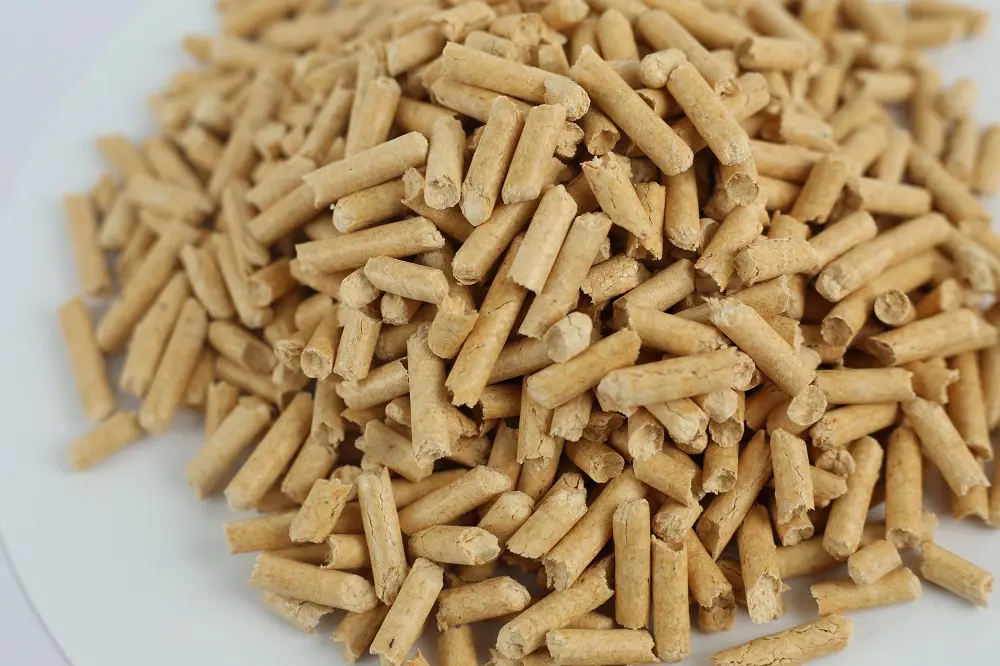
Green Pet Care’s Products: A Sustainable Choice
At Green Pet Care Co., Ltd., we understand the importance of maintaining a clean and healthy environment for your pets while being mindful of our planet. Established in 2014, our company specializes in the research, processing, and export of high-quality pet products, including cat litter, puppy pads, pet toys, pet food, and pet feeders. We are proud to offer a variety of eco-friendly cat litter options that cater to the diverse needs of pet owners worldwide.
Our Tofu cat litter and corn cat litter are specially developed to meet the growing demand for sustainable and humane pet care products. These litters are not only effective in odor control and moisture absorption but are also biodegradable, making them an excellent choice for environmentally conscious pet owners. Once launched, these products quickly gained recognition both domestically and internationally, with monthly sales reaching 500 tons.
In addition to our innovative cat litter products, Green Pet Care Co., Ltd. offers a wide range of pet supplies designed with your pet’s well-being in mind. Our pet food bowls and toilets, known for their stylish design and high-end quality, have become consumer favorites, with monthly sales reaching 2 million units.
By choosing Green Pet Care’s products, you are not only ensuring a clean and safe environment for your pets but also contributing to a greener planet. Our commitment to quality, affordability, and sustainability has earned us a strong reputation in the European, American, and Southeast Asian markets.
Conclusion
At Green Pet Care Co., Ltd., we are dedicated to providing high-quality, eco-friendly pet products that meet the needs of both pets and their owners. Our range of cat litters, including the innovative Duofu and corn cat litters, offer superior performance while being gentle on the planet. Choose Green Pet Care for your pet care needs and join us in creating a healthy, green paradise for pets everywhere.
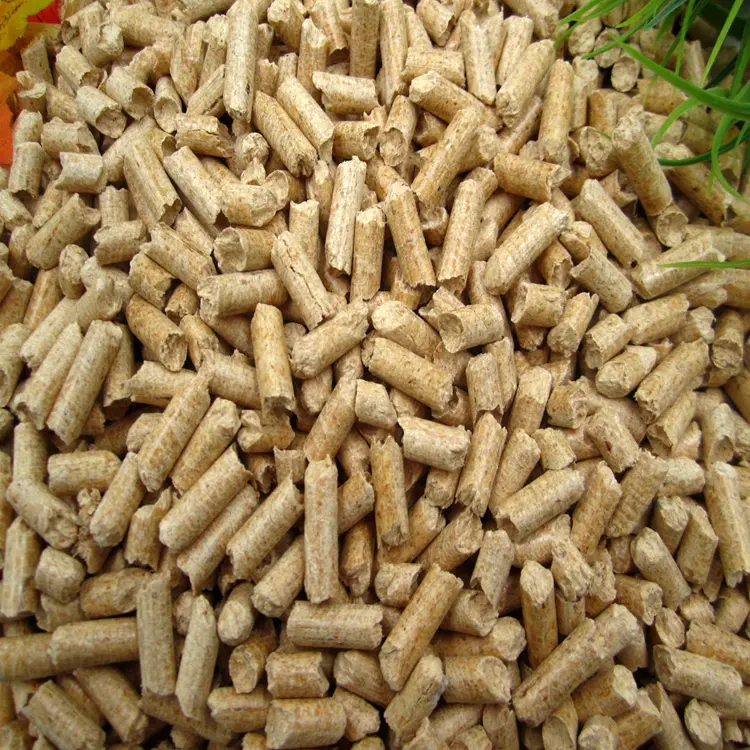
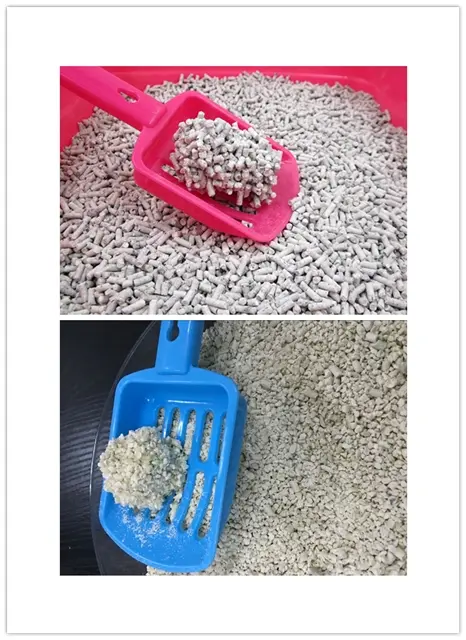


267.webp)
